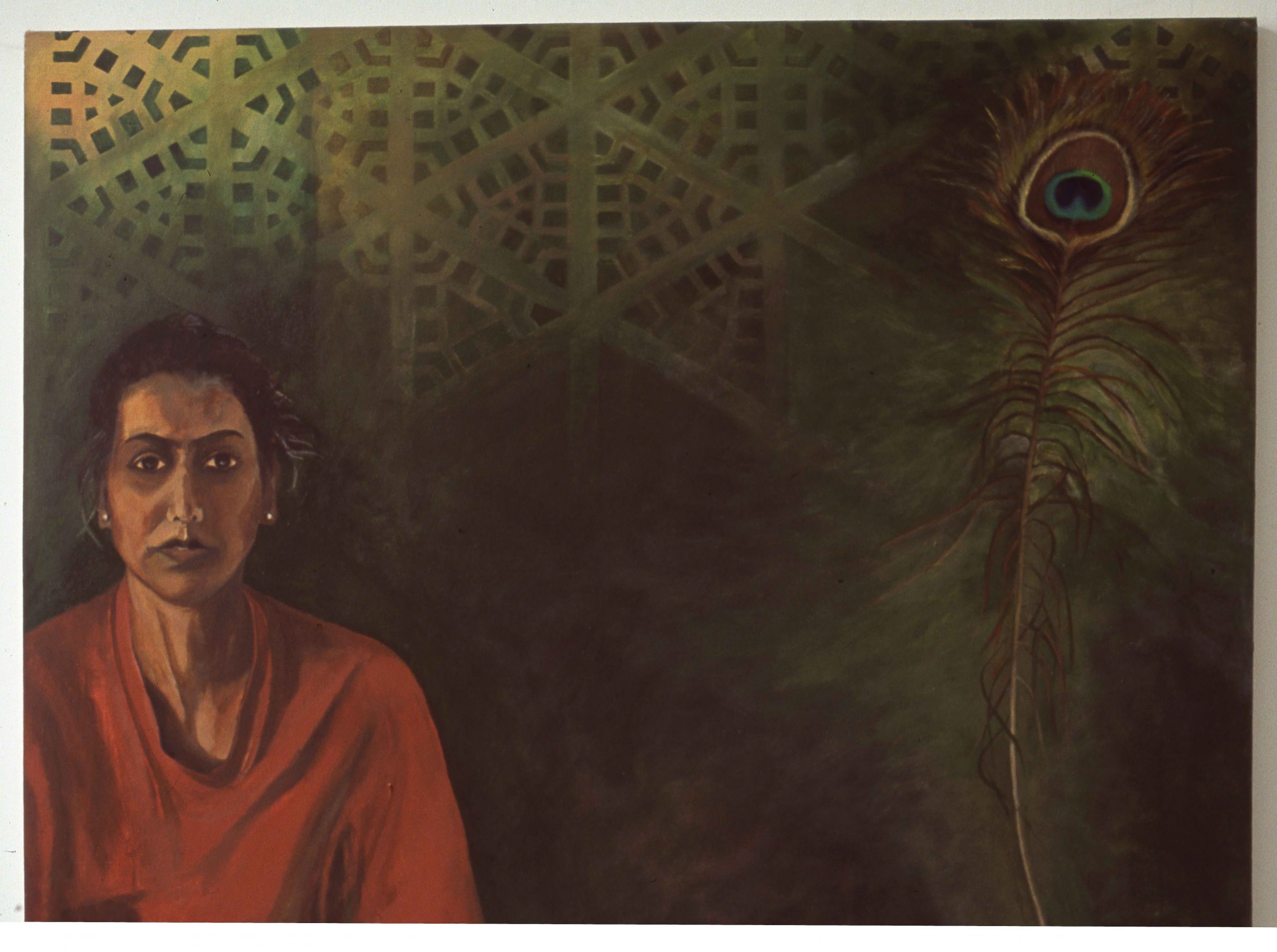
During the 1980s Bhajan Hunjan created a series of evocative self-portraits in which she investigated the multiplicities of personal identity via the interplay of abstract and representational forms.
Peacock Feather presents the image of the artist positioned in the lower left corner of the canvas; she is wearing a baggy long-sleeved t-shirt and stares directly out at the viewer. Hunjan utilises dramatic lighting effects in her self-portrait, which intensifies her piercing gaze and, in the first instance, locates the figure as the focal point of the painting despite being positioned at the edge of the composition. The portrait is counterbalanced by the head of a single peacock feather in the top right. These two parts of the painting are linked by an intricate latticed motif running across the top of the canvas. The abstract and symbolic elements of the painting, and indeed, the seemingly ‘empty’ space at its centre, serve to place the figure in a set of complex relations. Hunjan’s painting seems to address her position as a young South Asian woman in Britain: can she retain a sense of Indianness whilst also asserting a sense of self? The peacock is the national emblem of India, and here perhaps symbolises both nationalist and Orientalist exotic stereotypes; Is it possible to assert an inner sense of purpose without succumbing to the beauty and exoticism of the peacock feather or being subsumed by a dark shadowy abyss?
Hunjan was a consistent presence in exhibitions of Black and Asian artists during the 1980s. She curated Numaish: An Exhibition of 5 Asian Womens Work (People’s Gallery, London 1986); contributed to debates of Black feminism; and was a founding member of the Panchayat arts collective. Peacock Feather was first exhibited in the group show, In Focus, at the Horizon Gallery, London, in 1990. The exhibition had been conceived as a rejoinder to the omission of women artists of South Asian heritage from Rasheed Araeen’s landmark exhibition, The Other Story: Afro-Asian Artists in post-war Britain (Hayward Gallery, London 1989-1990).Amongst her peers, Hunjan’s work is valued for its thoughtful and meditative contribution to feminist debates; in Peacock Feather, she addressed the challenges and issues facing women with quiet intensity and compassion.
January 2022
Further Reading
Bhajan Hunjan and Chila Kumari Burman, ‘Mash it up’, Spare Rib, no. 128(March 1983), pp.52-5
Allan DeSouza, ‘Bhajan Hunjan’, Bazaar, no.7 (1989), p.23.
Maud Sulter (ed.), Passion: Discourses on Blackwomen’s Creativity, Hebden Bridge: Urban Fox Press, 1990.
Alice Correia, ‘Bhajan Hunjan: Creating a Language of Shape and Colour’, South Asian Diaspora Arts Archive, 2020, https://sadaa.co.uk/studio/files/Bhajan-Hunjan-essay-1.pdf
Bhajan Hunjan, artist’s website: https://bhajanhunjan.com/




